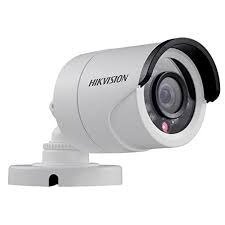Safety Pads M-3053
Article NO. M-3053
Safety pads are essential protective equipment used across various industries, including construction, sports, and manufacturing, to protect against impact and injury. Typically worn on the knees, elbows, or other vulnerable areas, these pads are designed to absorb shocks, reduce friction, and prevent abrasions. Made from durable materials such as foam, gel, and high-strength fabric, safety pads offer a combination of comfort and protection. In industries like construction, they prevent knee strain and injuries from prolonged kneeling, while in sports, they protect athletes from falls and rough contact. Safety pads are vital for ensuring worker and player safety in high-risk environments.
Categories: Accessories, Safety Pads
Related products
CANADIAN Gloves MSP-CG-1006
Safety Helmet M-3002
Article NO. M-3002
Safety helmets are crucial personal protective equipment (PPE) in the construction industry. They are designed to protect workers from head injuries caused by falling objects, debris, and accidental impacts. Constructed from durable materials like high-density polyethylene (HDPE) or fiberglass, these helmets provide a strong, impact-resistant barrier. They also feature adjustable straps for a secure and comfortable fit, along with ventilation holes to improve airflow. With additional features like face shields, ear protection, or reflective strips, safety helmets are essential for ensuring worker safety on construction sites, reducing the risk of serious injuries, and meeting safety regulations.
Safety Helmet M-3003
Article NO. M-3003
Safety helmets are crucial personal protective equipment (PPE) in the construction industry. They are designed to protect workers from head injuries caused by falling objects, debris, and accidental impacts. Constructed from durable materials like high-density polyethylene (HDPE) or fiberglass, these helmets provide a strong, impact-resistant barrier. They also feature adjustable straps for a secure and comfortable fit, along with ventilation holes to improve airflow. With additional features like face shields, ear protection, or reflective strips, safety helmets are essential for ensuring worker safety on construction sites, reducing the risk of serious injuries, and meeting safety regulations.
Safety Helmet M-3006
Article NO. M-3006
Safety helmets are crucial personal protective equipment (PPE) in the construction industry. They are designed to protect workers from head injuries caused by falling objects, debris, and accidental impacts. Constructed from durable materials like high-density polyethylene (HDPE) or fiberglass, these helmets provide a strong, impact-resistant barrier. They also feature adjustable straps for a secure and comfortable fit, along with ventilation holes to improve airflow. With additional features like face shields, ear protection, or reflective strips, safety helmets are essential for ensuring worker safety on construction sites, reducing the risk of serious injuries, and meeting safety regulations.
Safety Pads M -3051
Article NO. M-3051
Safety pads are essential protective equipment used across various industries, including construction, sports, and manufacturing, to protect against impact and injury. Typically worn on the knees, elbows, or other vulnerable areas, these pads are designed to absorb shocks, reduce friction, and prevent abrasions. Made from durable materials such as foam, gel, and high-strength fabric, safety pads offer a combination of comfort and protection. In industries like construction, they prevent knee strain and injuries from prolonged kneeling, while in sports, they protect athletes from falls and rough contact. Safety pads are vital for ensuring worker and player safety in high-risk environments.
Safety Vest M-4052
Article NO. M-4052
Closed-Circuit Television (CCTV) cameras are surveillance devices used to monitor and record activities in a specific area for security purposes. They are commonly employed in homes, businesses, and public spaces to enhance safety by providing real-time footage, deter criminal activities, and offer recorded evidence for investigations. CCTV cameras vary in type, including dome, bullet, PTZ (pan-tilt-zoom), and IP cameras, each suited for specific monitoring needs. Modern CCTV systems may integrate advanced features such as motion detection, night vision, remote access, and cloud storage.
Safety Vest M-4053
Article NO. M-4053
S
Closed-Circuit Television (CCTV) cameras are surveillance devices used to monitor and record activities in a specific area for security purposes. They are commonly employed in homes, businesses, and public spaces to enhance safety by providing real-time footage, deter criminal activities, and offer recorded evidence for investigations. CCTV cameras vary in type, including dome, bullet, PTZ (pan-tilt-zoom), and IP cameras, each suited for specific monitoring needs. Modern CCTV systems may integrate advanced features such as motion detection, night vision, remote access, and cloud storage.
Safety Vest M-4054
Article NO. M-4054
S
Closed-Circuit Television (CCTV) cameras are surveillance devices used to monitor and record activities in a specific area for security purposes. They are commonly employed in homes, businesses, and public spaces to enhance safety by providing real-time footage, deter criminal activities, and offer recorded evidence for investigations. CCTV cameras vary in type, including dome, bullet, PTZ (pan-tilt-zoom), and IP cameras, each suited for specific monitoring needs. Modern CCTV systems may integrate advanced features such as motion detection, night vision, remote access, and cloud storage.




























